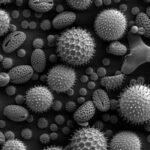Anyone who has Asthma, or who is responsible for a child that has asthma knows how frightening it feels to feel like “you can’t catch your breath,” and in fact when someone is having an asthma attack breathing is very difficult. Inflammation and contraction of the muscles in the lungs cause spasms in the major and minor airways in the lungs.
Emphysema is a frightening condition which the air sac to the lungs become damaged, which makes the lungs less efficient. Breathing becomes very difficult
During this frightening attack the sufferer struggles for air, and they may feel a tightness around the chest. The attack also includes wheezing and a persistent cough, which can be very distressing for the one afflicted, and the stress will often make the symptoms worse.
In emphysema the lungs have a lessened flow of blood which makes it difficult for the blood to get to the lungs, putting a strain on the heart which is very emotionally stressful, and stress can make the symptoms worse.
Asthma is a chronic breathing condition which is divided into two categories: Intrinsic, for which there is no identifiable cause, and extrinsic: meaning that the cause is identified. It is known that becoming asthmatic is becoming more common , though the exact reason why isn’t altogether clear. Asthma affects around 22 million Americans alone. It is possible that allergies, fumes and pollution play a role, as it is usually something inhaled which causes an asthma attack.
Emphysema is a progressive respiratory disease, and symptoms include wheezing, breathlessness, coughing, swollen and blue tinged legs.
Some other factors that are responsible for asthma attacks include:
*pollen
*food allergies
*changes in the weather
*vigorous exercise
*Smoking
*dust allergies
*drugs
*Heredity
In emphysema heredity, pollution and particularly smoking play a part. Tobacco damages the cells in the lungs air sacs, which destroy lung tissue.
One of the drugs that will sometimes bring on an asthma attack are non-steroidal anti-inflammatory drugs (NSAIDS), so if the asthmatic patient has other conditions they may need to request a alternate med.
During an asthma attack the muscles of the small airways in the lung (called bronchioles) narrow and tighten, which makes mucous collect which in turn makes the cough worse. The body goes into a spasm of dry coughing in order to clear the airway.
When lungs are damaged, such as in emphysema the lungs cannot be repaired.
An asthma attack that won’t clear up with an inhaler is an emergency, so seeking medical help should not be delayed.
Treatment includes the use of inhalers which relax the muscles around the airways. For children, these muscle relaxants also come in the form of a syrup. Emergency room measures might include the use of steroids, nebulizer treatment and intravenous treatments. Again, a severe asthma attack it is essential to seek medical treatment, as asthma can be fatal.
Drugs may be administered, and oxygen given for emphysema sufferers.
Some sufferers have benefited from the relaxation techniques as taught in yoga, meditation and stress reduction therapies. Many people have reported fewer incidences of asthma attacks by learning therapeutic breathing techniques, which release undue tension in the chest and allows the lungs to increase in capacity.
For emphysema breathing, relaxation and stress reduction therapies can all be helpful, but the greatest thing a person can do for both conditions is give up smoking.
Gentle exercise, such as walking may be advised to promote lung activity.
A good approach is finding herbal teas and remedies which can dilute the bronchial tubes and remove excess mucus. Some of the herbal remedies are:
Licorice root and comfrey will help relieve phlegm
Hermatitum
Coltsfoot flower
Cat’s claw
Wild cherry bark
Nettles
Beleric myrobalan
Ma huang
Ginkgo biloba
Cramp bark
Elecampane
Ephedra
Coltsfoot
for a much more comprehensive list go to: http://www.healingfoodreference.com/asthma.html
Some of the healing nutrients for asthma are:
Vitamin A helps strengthen lung tissue, and vitamin E may help with breathing difficulties
MSM
Quercetin
Selenium
Cysteine
MagnesiumAlpha-linolenic acid
Potassium
Omega 3 fatty acids
Magnesium
Some of the Healing foods for Asthma include, but are not limited to:
Dairy products should be avoided as they promote mucus formation.
Bell pepper
Apple
Fish
Yam
Jerusalem artichoke
Walnuts
Onion
Chile peppers
Orange
Coffee
Pumpkin
Chile peppers
Apricot
For a much larger and comprehensive list go to: p://www.healingfoodreference.com/asthma.html
Both Asthma and Emphysema are frightening breathing conditions that are different yet similar in symptoms and in determining solutions.
*I am not a doctor, this article for for informational purposes only, please consult with your physician if you have asthma or emphysema
http://www.webmd.com/asthma/default.htm
http://www.mayoclinic.com/health/asthma/DS00021



